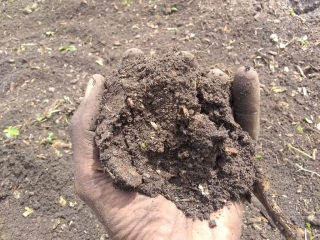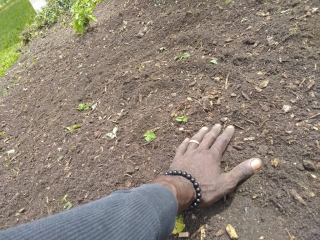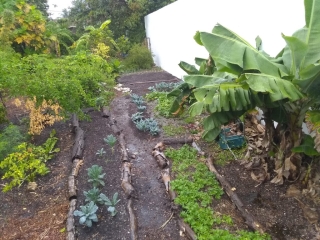Environmental
Decline
“Before we’re able to take action, we must first understand what the environmental crisis is.”
There is no doubt that our global environment is changing – from the hottest years on record, to the worldwide disappearance of pollinators, to the global collapse of fisheries, to human use of about half the planet’s livable surface to grow food.
Since 1950, we as a society have managed to increase our:
- Population by ~ 200%
- Fossil fuel consumption by > 550%
- Marine fish capture by > 350%
- Damn placement in ~ 60% of the world’s rivers;
while also managing to:
- Clear ~ 50% of temperate and tropical forests;
- Use ~ 50% of the planet’s accessible freshwater each year;
- Appropriate ~ 50% the planet’s livable surface in order to feed ourselves.
What's Regenerative Agriculture?
“Regenerative agriculture asks us to think about how all aspects of agriculture are connected through in nature’s entire ecosystem.”
Regenerative vs Sustainable Agriculture
One of the more common terms used for local farming practices today is one called sustainable agriculture, which refers to farming systems that are:
- Economically sustainable for farmers,
- Cause no environmental harm, and
- Socially acceptable and sustainable.
Regenerative agriculture refers to farming systems that are sustainable, but as a result of its principles and practices, aid to improve the environment in addition, rather than maintain the status quo.
Regenerative agriculture benefits the planet’s ecosystem, provides wildlife habitat, and improves soil health, air quality and water resilience.
Three Environmental Focuses

Soil Health

Air Quality

Water Resilience

Soil Health
Soil health is linked to quality air AND water. Soil health is the ability of the soil to sustain agricultural productivity and protect environmental resources.
Healthy soils are the building block for profitable, productive, and environmentally sound agricultural systems. While the techniques for caring for the soil vary, UGW (and other regenerative growers) focus on limiting mechanical soil disturbance such as minimizing or forgoing tilling. Instead, UGW teaches to feed and preserve the biological structures that bacteria, fungi, and other soil microbes build under-ground, which then provide above-ground benefits in return.
By understanding how farm management practices affect soil processes to support plant growth and regulate environmental quality, UGW has been able to design, crop and soil management systems that improve and maintain soil health (resiliently) over time.
*Insert photo and blurb of what vermiculture is*

Air Quality
Healthy soil produces organic matter, which is largely composed of carbon. What’s awesome is that healthy soil is able to store large amounts of carbon dioxide away from the atmosphere through a practice called carbon sequestration. With simple farming principles and practices there is a huge potential (from soil across the planet) for farming to play a role in mitigating carbon emissions!
Note: Carbon emissions (and air pollution in general) are known to lead to cardiorespiratory illnesses and other diseases.
Solution: Plant more trees, encouraging to reduce carbon footprint to improve air, and that ozone is protected. Too much carbon in the air increases the global temperature.
Zero waste is the concept of putting back into the environment whatever is taken without adding any contaminants.

Water Resilience
Healthy soil is able to capture more rain water, reducing run-offs into our water systems, which not only helps limit water contamination and pollution, but also limits flooding during excessive rain periods, because more rain will go into the ground instead of running-off. During drought periods, healthy soils have a better water-holding capacity which is great for farmers.
UGW’s “Hammocks in da Hood” and “Pollinator Pathway” projects address the critical need to reintroduce native plants into our landscapes and most importantly to remove lawns. It all comes back to water conservation.
Native plants require less water and fertilizer than ornamentals and grass. Most importantly, however, is that native plants also support the beneficial Florida insects needed to pollinate our crops and needed by birds to feed their young.



